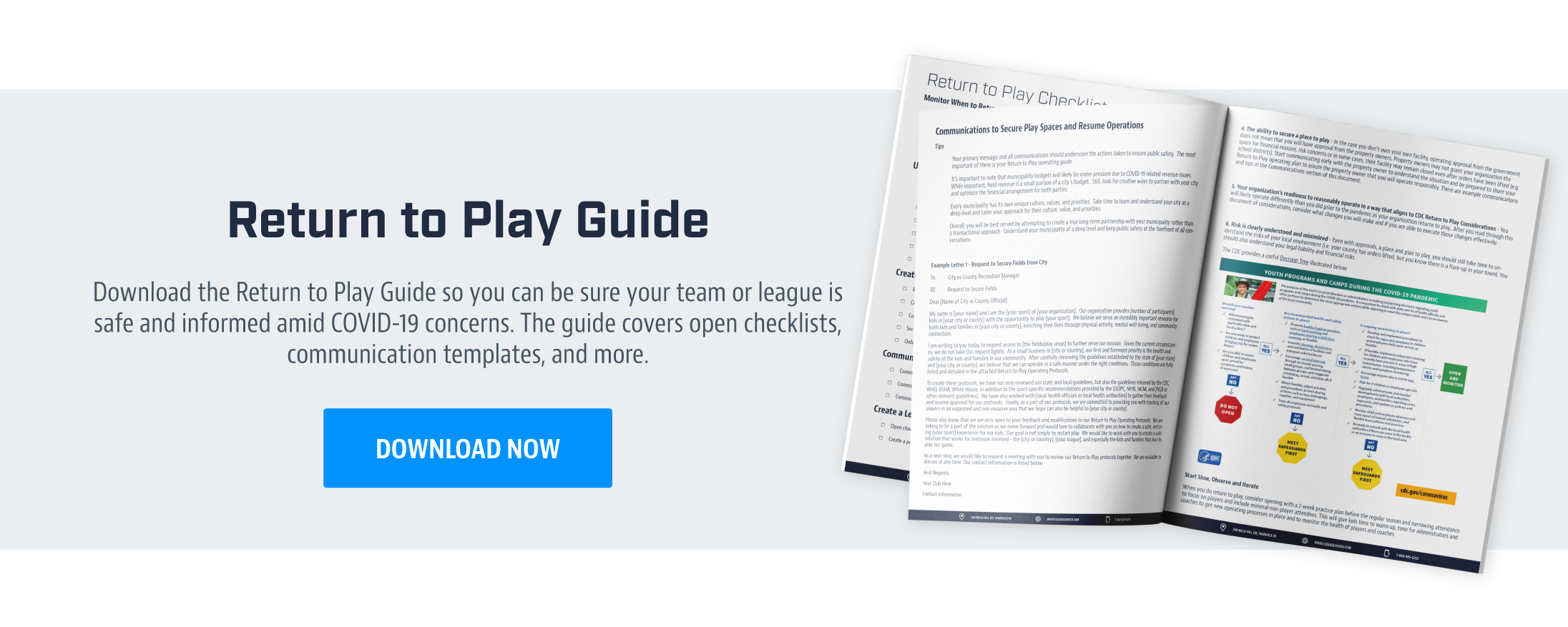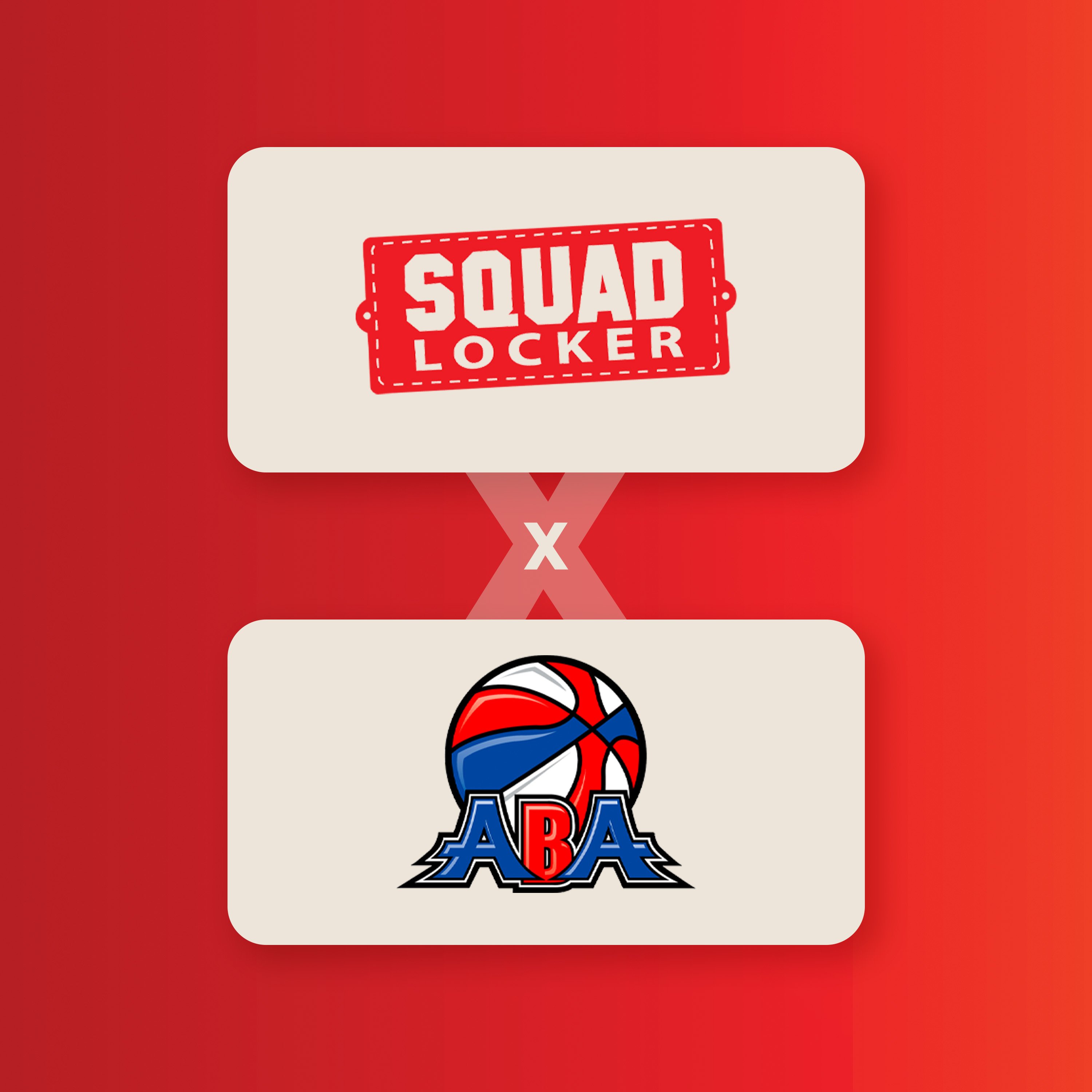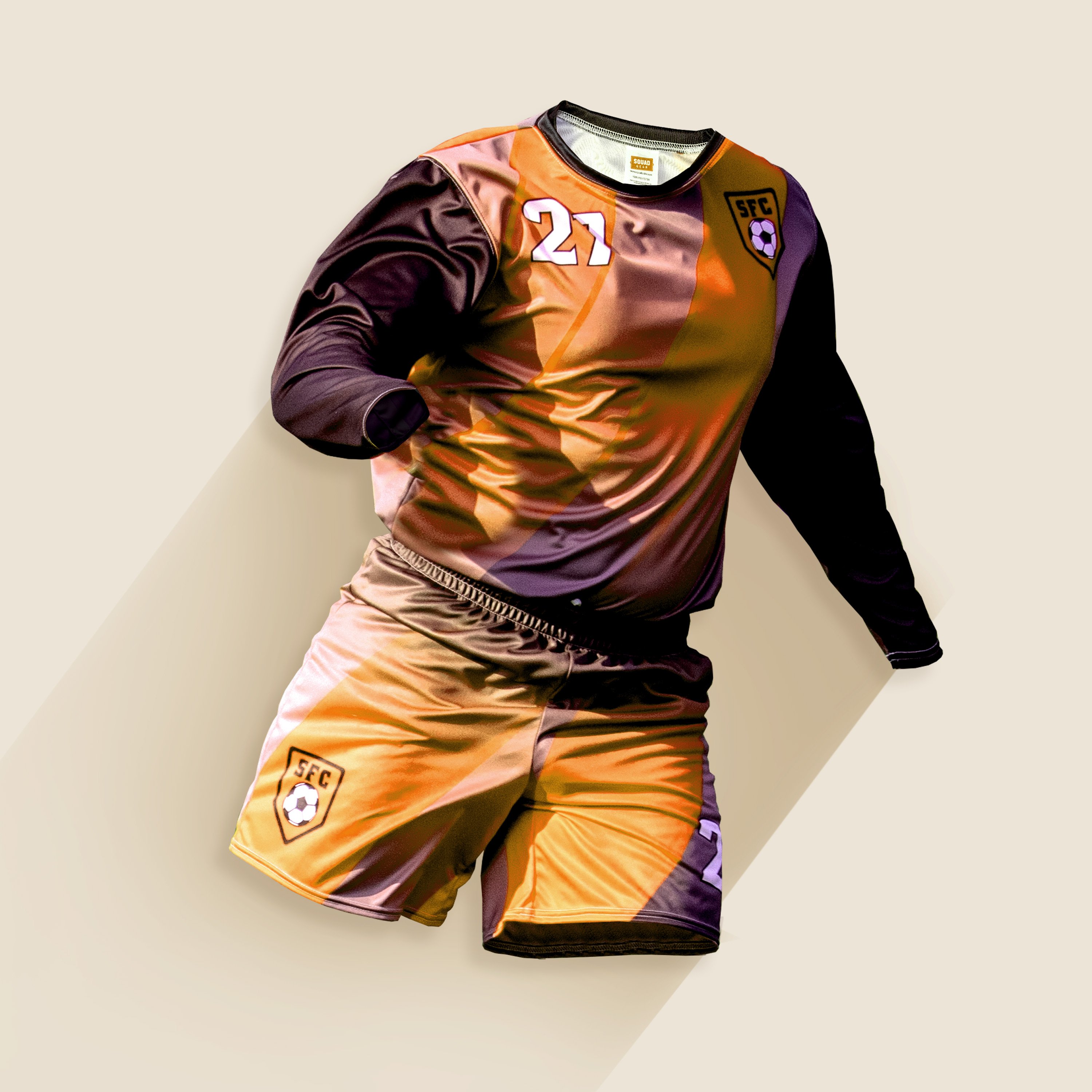Watch the full webinar, Return To Play Discussion with Industry Experts - Part 3 - Innovation & Tech. Hosts Gary Goldberg, SquadLocker CEO and Augusta Sportswear VP of Strategy Mark Botterill discuss the important role of innovation and technology in returning to sports safely.
Watch the Webinar
Read the Transcript
Jeanne Hopkins:
Hi, everybody. Welcome to today's webinar. This is our fourth part of the webinar. Just want to make sure that everybody can see my screen and introduce Gary. Hi, Gary. He's the CEO and founder of SquadLocker. And Mark, Mark is calling from California today, and he is a VP of strategy for Augusta Brands, one of our very important partners.
Jeanne Hopkins:
So thank you, Gary and Mark for joining us today. The topic that we wanted to talk about in Part Three was a little bit more about technology. And Mark, you're involved in a number of different organizations in your role at Augusta, and you had sent me some really interesting information that we wanted to be able to share with our audience today.
Jeanne Hopkins:
Well, first of all, we want to remind everybody on the call we are recording this webinar. You will get the slides with the information. I've included links and a lot of data here. Please ask questions in the GoToWebinar panel. There's a question box there, and I will be monitoring all the questions and then asking Gary and Mark at the end. We're continuing this series on the Return to Play theme. This is number three of our series. We've been doing them monthly. And just as a reminder, we're not providing legal and or medical advice, even though we like to play lawyers and doctors on TV, but we're not doing anything as it relates to anything having to do with the pandemic.
Jeanne Hopkins:
So again, Return to Play, Innovation and Technology. Mark Botterill, a VP of Strategy at Augusta Sportswear, and Gary Goldberg, co-founder and CEO SquadLocker. So one of the things we talked about, Mark, earlier is that there's a new normal now. So did you want to kind of address it before I moved into the data points?
Mark Botterill:
Oh boy, a new normal. Yeah, I don't know if it's oxymoronic, but yeah. I mean, for sure there has been a ton of... The constant theme is there's a lot of pent up demand for children to participate in youth sports, so that's a given. And I think for the most part, there's a lot of ambition in getting children back onto the fields for the health and welfare of all. And it's one of seeing data points that I think you're going to point to here later is a very, very interesting program for Kids First campaign, which I think we're going to share later.
Jeanne Hopkins:
Right. I think I can move it. Yeah, there it is. You want to talk about that now I put this data up there?
Mark Botterill:
Sure. So I think, again, I think the nature of the attendees have been primarily SquadLocker customers who are running programs. So this Kids First campaign is an excellent, I think, summary of the reality of training and the effects of COVID. So you can see those numbers, I don't have to go through them, but if you want to follow something, I'd follow Kids First campaign. I think that's gathering a lot of momentum in the circles that I sort of venture into a little bit.
Mark Botterill:
And then there is a program that the University of Wisconsin has been working on, Dr. Brian Watson, on the negative effects of the shutdown on youth sports. I think you're looking at the Morning Consult there. And so again, you can get that from the Kids First campaign. It's actually, that white paper is actually added to that document.
Mark Botterill:
But those are the two that I've seen that have gathered the most momentum in the last month, the last 30 days. It's topical it's on point, it's taking real time data. And so-
Gary Goldberg:
Mark, any sense of some of the negatives on not participating, just off the top of your head? I can imagine the negative effects as it goes to emotional wellness, physical wellness, connectivity, social connections, to peers, and free time for play and all that stuff. Is it as simple as that, or is it more severe? Like increase in obesity, increase in kids not getting medical attention because they're not actually testing their bodies. What have you read? What have you seen?
Mark Botterill:
Yeah, you're a hundred percent accurate. I mean there are obvious data points around the mental wellbeing of children. Terrible suicide attempts, and unfortunately there have been some child suicides, obviously that have stemmed from this in terms of isolation feelings and all kinds of things. So those are the heavy issues, and they're pointed into that report. I think what's interesting to me is the long-term effect, or medium term effect on the sports business. And that you're looking at statistics somewhere around 23% of children who have now lost interest in participating in sports. So they found something else. In some cases it's e-sports, in some cases it's other electronic devices that they're just lack of interest.
Mark Botterill:
And then you've got this continuing problem behind transportation. And the parents are in second jobs or third jobs are saying, "Look, I cannot get my children to facilities, so you better plan on us not participating right now while we can't transport our kids." And that brings a whole other series of issues behind, can sports go back to the city? There's this sort of attitudinal process that the governments and municipalities will give you tax breaks if you build something an hour and a half out of the city. There are lots of facilities that you probably know too, that are built way outside of the demographics that they're serving, because they're cheap land and incentives to build there. But it's actually not really helping. It fits a need in some areas for sure, where you can play multiple events and tournaments. But again, you're piping into the people at most risk are the parents that aren't the most invested, right?
Gary Goldberg:
Mark, when you were a kid and you grew up somewhere where they taught you how to speak with a funny tongue, because you don't sound like the other people that I know. But anyway, my parents never drove me anywhere.
Mark Botterill:
Yeah, for sure.
Gary Goldberg:
I don't know what transpired between this infrastructure build around places, but if I couldn't get there on my bike, well, tough nuggies, I wasn't going. So this idea around transportation being some sort of an excuse, I don't know what happened with the way parents and kids behave with each other and get to their places. I mean, I do know raising my three kids it was super organized and super structured, and we drove them to all that stuff, and it's just... I would love to see maybe if anything could happen here would be a less reliance post COVID on cars and planes and trains in a more hyper localization, or a return to hyper localization.
Mark Botterill:
You make a great point. I mean, there's been a systemic switch in the way that parents have sort of monitored their children, because we don't necessarily live in a safe society today, unfortunately. And so there's... I mean, I took the train right to any game that I went to. My parents rarely ever went to any game. And we've gone through a generational switch, and I played every night. I mean, there wasn't a lack of opportunity for my parents to get to the game. It just wasn't something they did. And we've gone through this shift over the last two generations in which parents have myopically been involved in their kids' game.
Mark Botterill:
But there are some points that folks want to look to. If you look at the Over Under initiative run by Kyle Martino and some of his friends, where they're basically... And I think SquadLocker is involved in some of those things, like Peace Court et cetera, but if you look at what those guys are doing, and they're trying to take facilities inside cities that are either blacktop, tarmac in England, obviously, but blacktop and trying to make those a multi-sport facility. And so that initiative around the country is popping up. You look at Soccer in the Streets, who are building facilities right next to transportation hubs, like the Marta train station Atlanta, where kids can get a free ticket to transport themselves on Atlanta subway stations, and then get to train stations and simply jump off train and get into some sport facilities to play.
Mark Botterill:
So I think there's been some engineering behind trying to address facilities right in the cities, but it's an attitudinal, governmental change that the Play Coalition is addressing at the moment to try and get facilities. There certainly aren't going to be some lush 11 on 11 soccer facility or a brand new diamond, but they've got to be play spaces that can be retrofitted to create a different playing environment, to get children into sports that don't have the barrier of transportation. But it's a real thing. I mean, it's happening.
Gary Goldberg:
Cool, wow. Got it. I love the transformation. I'm just looking at the Soccer in the Streets website, it looks tremendous. And the Over Under initiative, it's just... This is the transformation where we've gone, where we've tried to take things and make them facility driven or infrastructure driven. And then this is the market kind of snapping back and saying, "Hey, that's great, but that's not accessible for large portions of the population. So how do we transform what's available for them in order to get them back involved?" Them being the young kids who don't have access to the mega facilities or the car rides everywhere and stuff like that. So it's great to see that there are things out there. Thanks for sharing that with us, Mark
Mark Botterill:
And I think you've been involved in some of those things, your heart and soul is into this as well, right? Whether it's reclaiming basketball courts that you're involved in now, and I think leaders, captains of industry like yourself, I think need to get behind the less invested parent. I mean, that's probably a pretty poor title, but the less invested parent has got to find solutions that are close to home in manufacturing when we talk about near sourcing as a solution. And so near sourcing facilities for children who were at the most risk of being lost to sports is a critical function.
Mark Botterill:
So if you're running a youth soccer program or a lacrosse program, I think today you've got to have a strategy. If you look at, take a look at NHL, for example. It's a great example. People that can't afford ice time. So they built a stick and puck program that will be on school gymnasium floors, in school backyards, they built an NHL light program that addresses the aura of playing hockey, but they're going to have to switch to a street ball program to be able to address the ability to get there. And so if you're running a youth sports program today, I think you've got to have a strategy that says, well, how do I bring the sport to the demographic? Knowing that maybe one in five, one in four are just not going to be able to be transported to a training center that people just can't get to.
Gary Goldberg:
Mark, to that point, can you share with the audience a little bit about what's going on with PAL and how PAL is trying to connect the kids who may not have access to programs and infrastructure? I just think there's a really interesting dynamic there around the resource of the Police Athletic League, and the communities currently in the backdrop of what's going on across the country. I just love to know how they're positively impacting.
Mark Botterill:
I think that obviously the police force today is a delicate issue socially at the moment. And I feel for them right now, in every way, shape or form. As to when you start peeling back what the police do do on an everyday basis, they are critically involved in youth sports development. And I think you're mentioning the National Police Athletic Leagues that around the country almost now 400 of them, which primarily fully fund the kids to participate. And most of these guys, whether in Broward County, Detroit, New York, run some phenomenal programs that are beyond just the sport. So I think what they've done is exactly what we've just talked about, is that they've tried to figure out how to build and create environments to play within the city. So they've been able to successfully do that.
Mark Botterill:
But they've also provided a great connectivity to schools. And the mission behind the PAL is a unique one, but they've connected to the schools, they've used blacktops in schools, and they've provided a tremendous amount of diversity in sport. And they, they run some non-traditional sports that people are not that interested in. They're very strong in boxing, for example, but they've diversified their sport menu. They've utilized central city facilities, they've morphed their playing environment, and they've made it cost effective.
Gary Goldberg:
That's great. All right. Let's go back to Jeanne , because we've completely derailed the conversation
Jeanne Hopkins:
Yeah, well, it's a better conversation, I'm sure. We wanted to talk a little bit, Mark, this is one of the charts that you sent me from the organization that you were mentioning from the data. And this information will be available to our audience today. So you were asking a little bit about what's happening, the risks associated with the rewards of participation versus non participation. So this was an interesting part of data, where many parents feel, should they agree that the benefits outweigh the risks of something like that? And there's a pretty large percentage of total strongly disagree and someone disagree. And yet there is where, depending upon the age, it looks like parents of children ages 6 to 12, somewhat agree, and 13 to 18. It's mainly smaller children, and it gets back to that data point that you had from San Diego County, talking about the Kids First in terms of the data that they were having relative to testing for COVID. So when you look at this, what do you see?
Mark Botterill:
Well, I think in combination I'd be interested in what Gary's thoughts are, as a parent but also as a captain of industry.
Gary Goldberg:
Captain of industry. I love it when you call me that. I'd rather think of it as captain of a small boat, but industry is okay.
Mark Botterill:
I mean, captain, my captain. So I think it in combination, to the listeners, obviously, I think if you tune into morningconsult.com, I think they probably have some of the best data that's real time. And I would put what's on the screen in context of a couple of things that are of interest. One in four sports now are mandating that you play with a mask, which is super interesting. But probably the biggest factor combined with this is that an in April, Morning Consult asked you sports organizes, how likely are you to withstand this? And 49%, I think was the number, said that they were going to fail in the next three months. That number's now 29%. So a 20 point difference is significant, I think, in terms of people's outlook as to whether they can survive.
Mark Botterill:
And I think a lot of that's come from an innovation perspective, much like SquadLocker's innovated this industry through finding ways and listening to their customers, and understanding what their customer's needs are. And then architecting programs like MVP and Ship to Home. I think many of Gary's clients and your clients, Jeanne , have morphed their business significantly. And I think you're seeing that play out in some of these numbers that you see in front of you, that confidence is starting to build back.
Jeanne Hopkins:
Yeah. I'm just going to go back to the... Oh, sugar plums, I don't think I put that data in there.
Mark Botterill:
Sugar plums?
Jeanne Hopkins:
Yeah. So, sugar plums.
Mark Botterill:
Sugar plums.
Jeanne Hopkins:
So I guess what I... You had another bit of data where you were talking about the benefits outweighing the risks and that sort of thing, but there was also a lot of information in that particular organization I'm trying to find. Not Kids First. I guess I didn't save it, so my bad on this. So I'll change the slides before I send it out to our audience. But this is in terms of the pandemic dragging on. It's been six months plus now, and kids are not playing, or the parents are afraid to have the kids, or if they are playing, there's a lot of masks that are involved right now.
Jeanne Hopkins:
So if you talk about participation and you talk about this particular information regarding the analysis of what percentage are actually positive, and if you look at the training sessions here, that was something that was interesting. It was in one of these, in the Kids First data, but then in the other data point too, that people are feeling safe, but they're also feeling like they're a little bit in a bubble right now. And it's such a difficult situation. And I hear from a lot of parents myself about people don't know what the right thing is to do. And how are we going to look back on this? What do you think the issue is going to be? Gary?
Gary Goldberg:
Yeah, well, I think my sense of it as a parent of three kids who are all now in college and successfully deployed into their individual cities where they're living, but I'm on the board of a school, a K through 12 school. And I'm fortunate enough that both of my parents are still alive. And so when I look at this current situation, it would be really helpful if we could start to compartmentalize who truly is at risk. That's really hard to do emotionally, but from a practical standpoint, if you ask 100 kids, "Hey, do you feel safe to play sports?" I would bet that a significantly higher number of them would be enthusiastic to do it and feel confident to do it.
Gary Goldberg:
The problem isn't about the child getting infected. Quite honestly, from what I've read, it's an incredibly low negative effect for someone less than 25 years old to get this terrible illness. The risk becomes when that child goes back home and may live with his or her grandparents, or lives with a parent that has a pre-existing condition that would put them in a higher likelihood to suffer terribly, or something even worse. And so the interesting thing about that survey, if I'm going to reinterpret the survey and ask it again in a better way, is it that you don't want your child to play cause you're worried about your child getting infected, or is it you're worried about how that child comes back into your home and hurts Nana, hurts Grandpa, hurts Dad, hurts Mom. That 30% there, I think those are the people like we don't know what happens if my child becomes a vector of distributing that disease within my immediate family.
Gary Goldberg:
So if you ask that question again, how do I look back on this? I think unfortunately, children's freedom is the greatest sacrifice to protect the elderly at this point, because they're little micro vectors, right? And so it's not that they shouldn't be playing. And quite frankly, if they get sick, we don't know what the long-term effect is of this disease on kids who've gotten it or people who have gotten it, that's still yet to be determined. Hopefully we won't see something 10 years from now that someone had the disease and they've got permanent damage around some part of their body functioning a certain way.
Gary Goldberg:
But really what this is, is control the kids so they don't spread it to the people that could get sick. It's kind of a funny balance, because wouldn't it be better if the people that could potentially get sick, just self isolated and the rest of the rest of the people went about their way. Unfortunately, that's maybe not that easy to facilitate, because there's obviously a relationship between the kid and the parent. I really believe that the survey says the parents and the adults are worried about what can happen to them or the ones that they love who potentially could be really harmed by the disease. The kids are caught in the crossfire.
Jeanne Hopkins:
That's a very good point, Gary. Mark, what are you seeing, or what do you see when you look at this data? Or what do you think we're going to... When we're looking back at this six months from now, let's look back on where we are today. What do you think we would see?
Gary Goldberg:
By the way, I'd love our listeners, if anybody wants to throw a chat in the chat box, am I crazy by what I just said? Type, "Gary's crazy," if you think Gary's crazy, or tell me I'm not, but that's the way I'm seeing it.
Mark Botterill:
I would just add one interesting point, I think to underscore what Gary said for sure, is that if you look at a dramatic drop in basketball in church leagues, it's significant. They are probably the hardest hit at the moment, or hardest affected programs in terms of the participation rates that I've seen. And so the rationale is that, okay, we don't mind the kids participating, but what did they leave when the elderly come back to the church facilities after they've been in it? I know that's a super granular piece, but I've literally heard that multiple times with church associations, that they're not going to be letting their gymnasiums and facilities be used for sports. And they are the hardest hit participation numbers at the moment.
Gary Goldberg:
So does that support my hypothesis, Mark?
Mark Botterill:
It does. Yeah, I think that's a genuine concern, not that the children would transmit, because you look at the National Federation of High Schools numbers today, 7,000 games have gone on in the National Federation of High School Football, the most at-risk sport for non social distancing, and they've only canceled 1.3% of the games. There has been no evidence of any transmission from team A to team B. And so you're not seeing that, right? You're not seeing that transmission. But I think that the genuine, to support your thought, is the genuine concern if you look at it, that guys who have been hit the hardest have been churches. So church leagues and church organizations, their participation numbers are really, really low compared to others.
Mark Botterill:
And the primary response is, we're not letting those facilities be used in the same day that children would participate in sports, and then elderly folks like myself would go into the facility. And that's literally the number one reason why those facilities aren't available.
Gary Goldberg:
You know what else is interesting, Mark and Jeanne , that I'll share with you. I started a podcast that we're going to release soon called On the Whistle, where we interview mentors, leaders and coaches about their approach and impact on young people playing sports, and how they take that very complex transition between youth and adulthood, and making that path as straight line as possible. I've talked to the coaches, I'm talking to the leaders of these programs. I've talked to an NCAA hockey coach. I talked to a Division 1 football coach, they're suffering. And they're suffering because their purpose in life is to help kids become better athletes and better people. And all of a sudden, overnight, they lost connectivity and connection from their entire customer base, their entire work product.
Gary Goldberg:
And so this isn't just a kid and parent thing. This is the staff, the coaches, the mentors, they're having a long-term negative consequence of their own isolation, because they get so much joy about around being around these kids and young people, and helping them through this process. So it's multi-dimensional, there's all sorts of this negative concuss that has spread across the industry. I just think we have to be careful not to just think about it as parents and kids too, but it's the people that actually put the programs on that are really being impacted as well.
Jeanne Hopkins:
Yeah, I remember Mark, you said in our first one of this series back in July, that there was a risk, that there was the April survey data that said 46% of those youth sports organizations felt like they were at risk, and now it's dropped 17 points to 29%. Why do you think that we've had that big of an improvement? I mean, that represents like a 38% improvement in youth sports organizations because they're coming back to play, or what do you think is happening? I mean, it's still not good, 29% that may permanently close, the ones that we need the most, probably. So what are your thoughts on that?
Mark Botterill:
Well, I think initially there were, the sky was falling for sure, right? So you got that reaction from folks sort of a bit of a doomsday atmosphere around the business. But I think, again, I go to, to serve my purpose, to congratulate Gary and the good folks at SquadLocker. If you look at SquadLocker's role in the industry today, which is a very traditional business and generally very difficult to penetrate the marketplace because it's such a mature business, is that it's done with innovation and creativity. But it's also done with listening to what parents, or in your case your customers wanted. I want it shipped to home, I want it in three days, I want it personalized and customized, I want it packaged with expertise and care, and I want it to be a Christmas box that's delivered to my doorstep, and have that great experience.
Mark Botterill:
Okay, so that innovation hadn't taken place in a long, long time. And when it did, SquadLocker grabbed a significant market share. So as it relates to anything in business like new sports today, you've seen people go to monthly subscriptions instead of fall and spring seasons. So now it's open 12 months of the year. Parents don't have to stop and start and start and stop, but they can pay a monthly subscription to the organization. I see that a lot. And that it's an innovation that makes a lot of sense for parents. But they also get a value package. So they can, if it rains and there's no practice, they can go virtually, because they've built a virtual package of training. So multi-part, multi-use for that innovation.
Mark Botterill:
We've seen people get away from structured training and get into skill acquisition. So we follow USTA tennis, which I think is... If you watch and you're interested in an organization that's innovated tremendously, USTA is probably the most innovative group in terms of the grassroots participation. They've structured a program that's got nothing to do with competitive nature. It's got everything that was skill acquisition in the theory that if children have joy in playing, much like a private piano lesson, they'll stay in and stay with the program far greater, because they will feel competent at their skillsets. And so their entire program has been innovatively grown on skill acquisition and not competition.
Mark Botterill:
They've also provided ship to home programs that have tennis rackets that are signed by Serena Williams with a story about dreaming to be a great player of tennis, and they've shipped products to home to inspire people. They've also done programs that have given grants to schools for schools to drive participants to their training centers.
Mark Botterill:
And so when you see that type of innovation, whether it's SquadLocker in the industry or USTA, you can see the reasons why people are coming back, and they're more confident. They've had time to think about their business. They're not the kingdom of the blind ruled by a one-eyed king type atmosphere. They now have a chance to sort of say, well, we should do this instead of this, right? We should play three on three instead of nine and nine on blacktops and bring the sport to the local community.
Mark Botterill:
So innovation has created, I think that change in numbers, and I think their clients have responded favorably to it. And there's a little bit more ray of hope than there was before.
Jeanne Hopkins:
Gary, did you have something that you wanted to say?
Gary Goldberg:
Just to support that, I just saw SportsEngine and Max 1 just announced a partnership where they're providing online training for free to all the SportsEngine accounts and customers from Max 1, which is an online training platform that allows coaches to connect, to provide training curriculum for athletes to do on their own. And they can track progress of how those athletes are doing. So clearly the technology is filling out a piece here, and keeping things connected when it's not so easy to do in person as well.
Jeanne Hopkins:
Well, that's great. Well, if anybody has any questions that they'd like to ask Mark or Gary, please pop them into the question part of the control panel that you have with GoToWebinar. And I haven't seen any chats or any questions yet. Thank you very much, Gary and Mark, for today's discussion. Part Four will be on October 28th. Our guest speaker will be Traci Fairchild, she currently manages the Rocky Hill Day School health and welfare program, as well as being the field hockey coach. So she's going to be a wonderful speaker for us to talk about the impact, the anxiety, everything that's happening with both the school athletes and their parents, and talking about how she's been able to help them as we try to move forward into some degree of normalcy with this pandemic. So again, thank you, Gary, thank you, Mark. And everybody, you'll be getting a copy of the slides as well as the recording. Thank you.
Gary Goldberg:
Thanks, Jeanne . See you, Mark.
Mark Botterill:
Jeanne , thanks. It's been my honor to spend some time with you, Gary, and thanks so thanks very much. Take care, everybody.
Jeanne Hopkins:
Goodbye.
Share this Story



.jpg)







